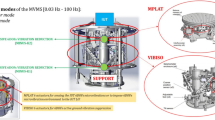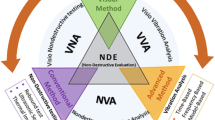Abstract
Structural analysis involves three main phases, namely, modeling, analysis, and results processing. Computer software exists in order to automate the analysis and results processing phases. However, modeling is still done largely by hand, especially for frame structures.
This paper considers automated modeling of frame structures in the context of a computer integrated system for structural engineering design. In this system a structure is defined in terms of its components and connections, and it is necessary to create an analysis model in terms of nodes, elements, boundary conditions, and so on. The paper describes the logic of the modeling process, describes the output from the process, and shows how this output can be used as input data for a structural analysis program. The scope is limited to determination of the structure stiffness properties and assembly of the stiffness matrix.
Similar content being viewed by others
References
Powell, G. H.; An-Nashif, H. (1988) Automated modeling for structural analysis. Eng. Comput 4, 173–183
Powell, G. H.; Bhateja, R. (1988) Database design for computer integrated structural engineering. Eng. Comput. 4, 135–143
Furnike, T. (1972) Computerized multiple level substructuring analysis. Comput. Struct. 2, 1063–1073
Hollings, J.P. (1978) The substructure technique as applied to linear elastic analysis. Ph.D. dissertation, University of California, Berkeley
Row, D.G.; Powell, G.H. (1978) A Substructure Technique for Nonlinear Static and Dynamic Analysis. Report EERC 78-15, College of Engineering, University of California, Berkeley
Dodds, R.H. Jr.; Lopez, L.A. (1980) Substructuring in linear and nonlinear analysis. Int. J. Numer. Meth. Eng. 15, 583–597
Wilson, E.L.; Dovey, H.H. (1982) Three-Dimensional Analysis of Building Systems—TABS. Report No. EERC 73-22, Earthquake Engineering Research Center, University of California, Berkeley
Mondkar, D.P.; Powell, G.H. (1974) Towards optimal in-core equation solving. Comput. Struct. 4, 531–548
Felippa, C.A. (1975) Solution of linear equations with skylinestored symmetric matrix. Comput. Struct. 5, 12
Author information
Authors and Affiliations
Rights and permissions
About this article
Cite this article
An-Nashif, H.N., Powell, G.H. A strategy for automated modeling of frame structures. Engineering with Computers 5, 1–12 (1989). https://doi.org/10.1007/BF01201993
Issue Date:
DOI: https://doi.org/10.1007/BF01201993




